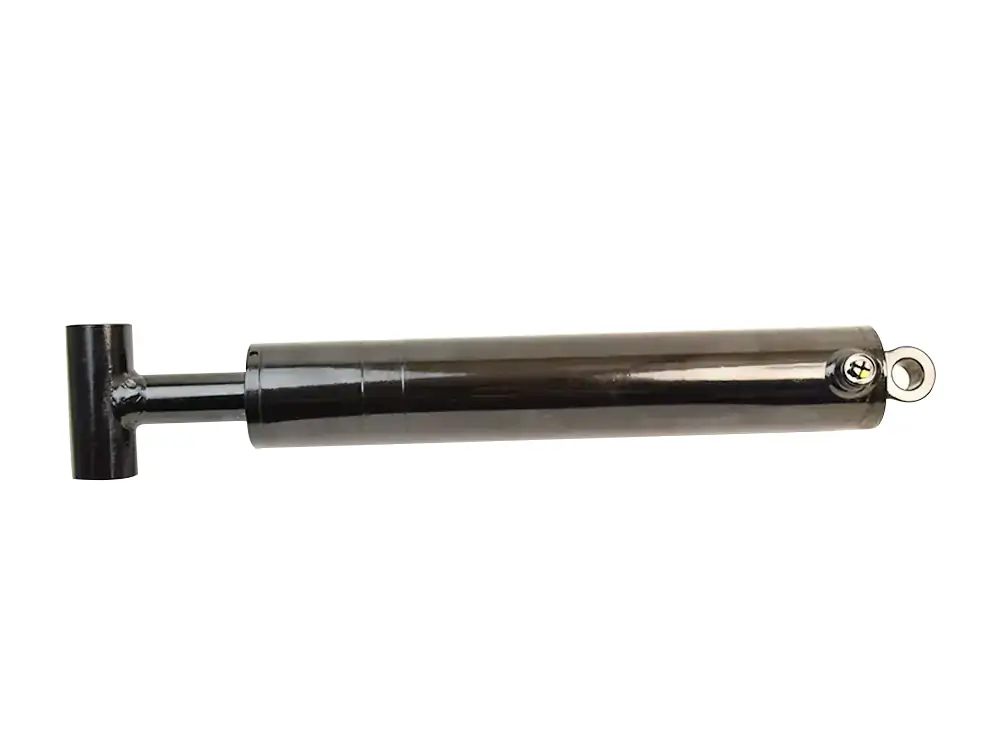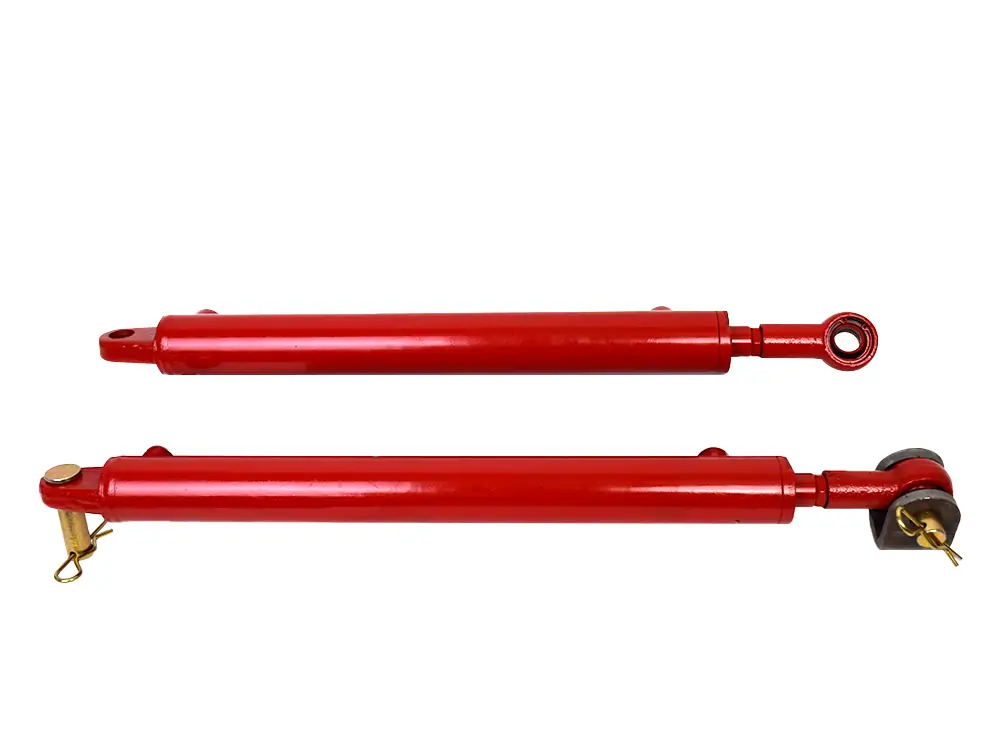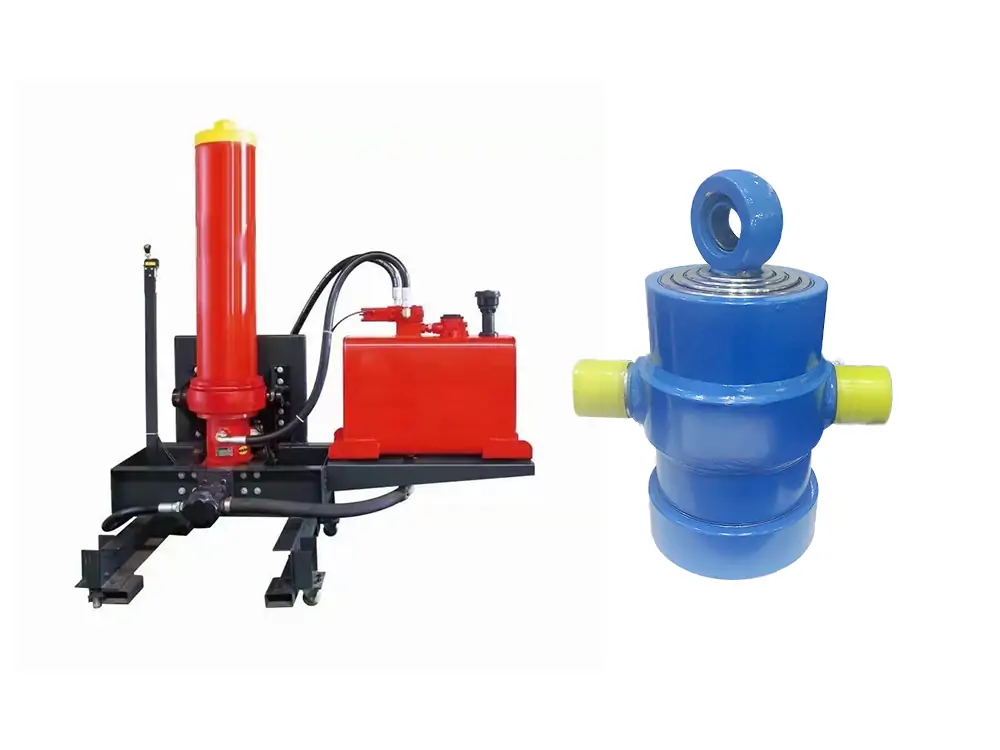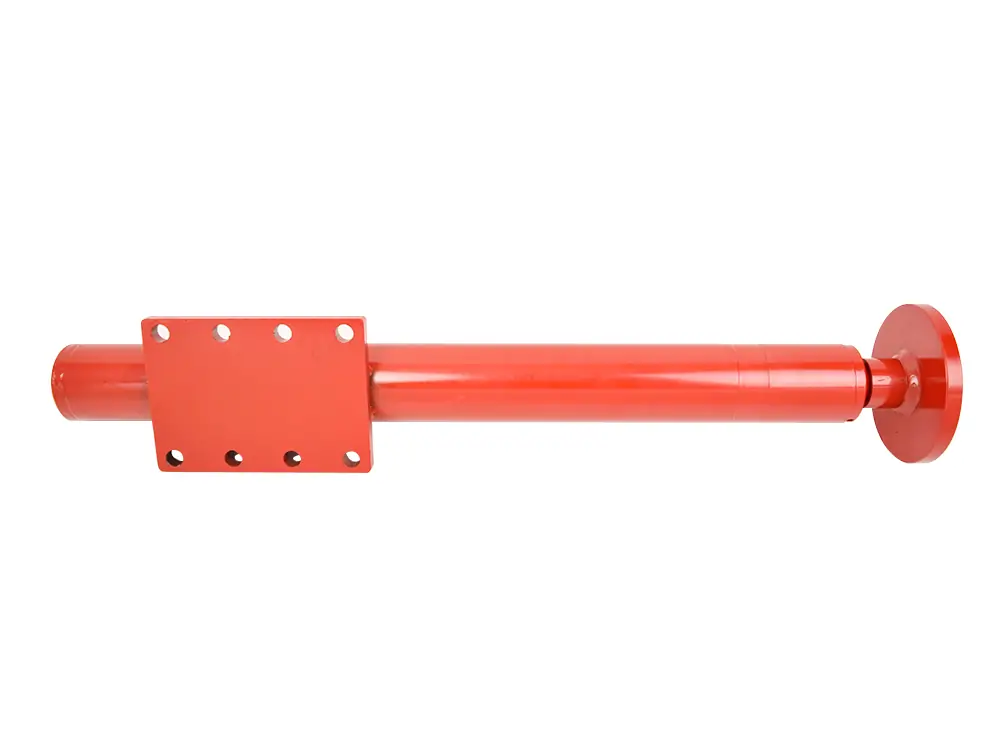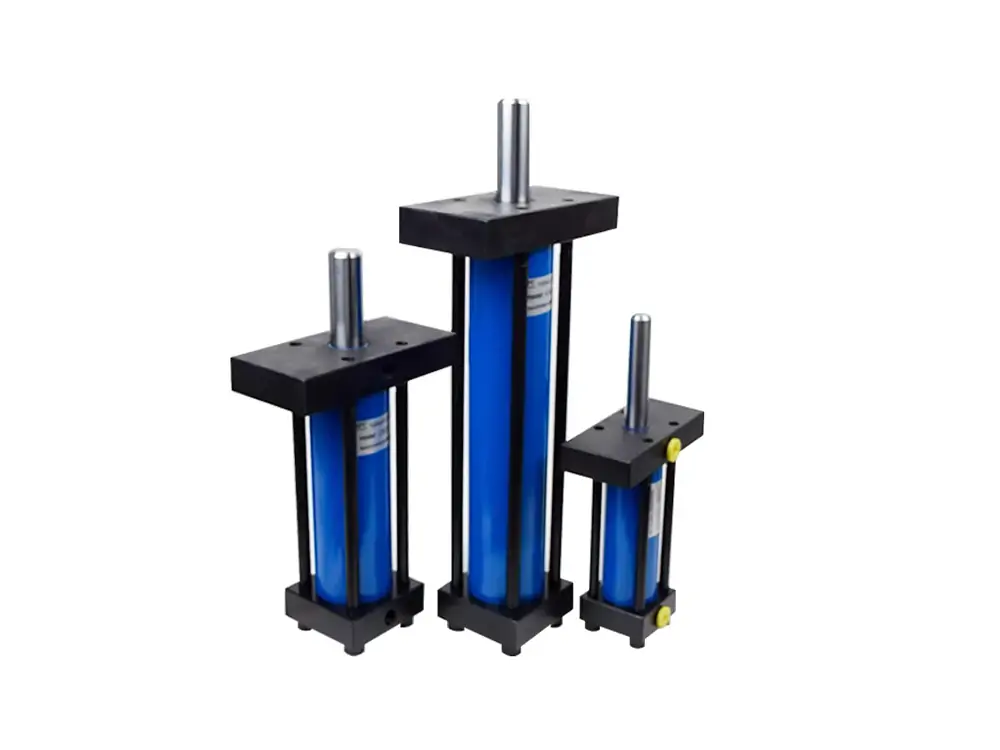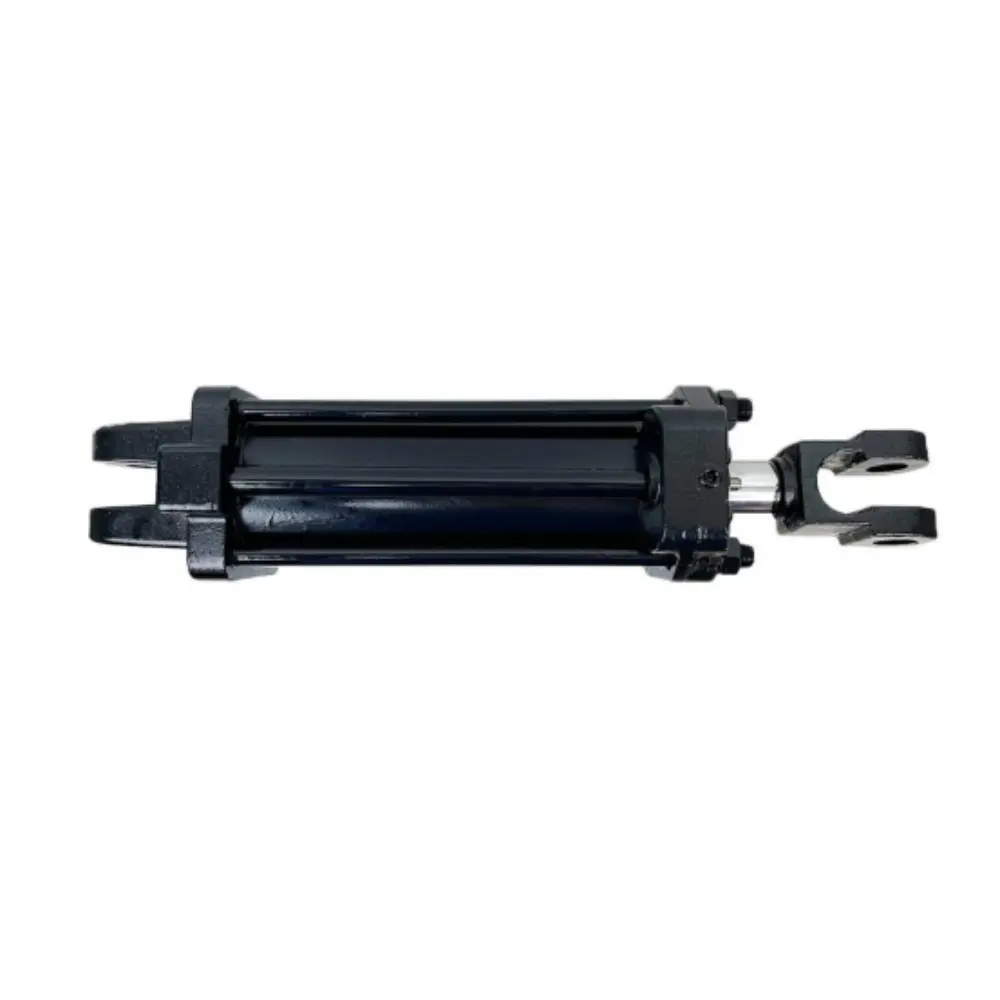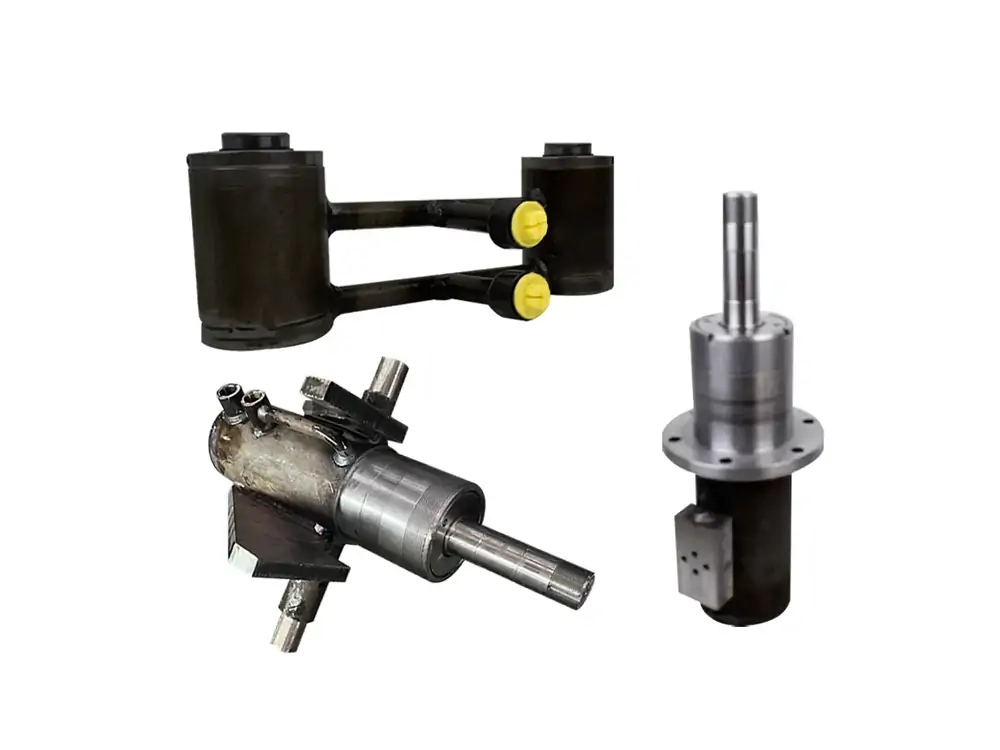Do you own a hydraulic cylinder? Taking measurements of various parts of a hydraulic cylinder is sometimes necessary. It can assist in finding a perfect replacement for your hydraulic cylinders.
Before you take the measurements of the hydraulic cylinders, you must know the various tools and instruments needed to measure them.
Today, we’ll discuss the various steps to measure the hydraulic cylinder and provide a detailed overview of the different aspects of measuring tools.
What is a hydraulic cylinder?
A hydraulic cylinder is a heavy-duty piece of equipment that works according to the principles of Pascal’s Law. The fluid pressure creates a sufficient force to perform heavy-duty tasks in the machinery and vehicles.
It comprises various components such as:
- Piston rod
- Cylinder Head
- Barrel
- Cylinder Base
- Gasket and Seals with other components
Tools required to measure a hydraulic cylinder

Measuring a hydraulic cylinder is only possible with the necessary measurement Tools. But the question is, what essential tools are required to calculate a hydraulic cylinder?
Take a look at the detailed functionality of each tool listed.
Calipers
Calipers are the measuring tools that calculate the diameters and dimensions of the different components. They often measure the piston rod diameters. The common examples of diameters include the Digital or Vernier Calipers.
Measuring Tape
The measuring tape is a free-end tape that measures the length of the hydraulic cylinders. Users measure the stroke length with the retracted and extended length of the cylinder.
Micrometer
Micrometers act as an alternative tool to calipers. It gives more accurate measurements regarding the diameters of the piston rod. They can be either digital or mechanical micrometers.
Thread Gauge
Thread Gauge can measure the thread size of the hydraulic cylinder. It helps understand the hydraulic cylinder connection sizes and types.
Bore Gauge
Do you want to measure the cylinder’s pressure capacity and volume? Please leave it to the Bore gauge that goes into the cylinder and measures it.
Depth Gauge
A depth gauge can measure the depth of the seals and grooves in the cylinder. The analog or digital gauges can speed up the measurement process and fetch flawless measurements.
Dial Indicator
If you have any misalignment or irregular movements in the hydraulic cylinders, dial indicators show it instantly and provide better protection.
Pressure Gauge
For the hydraulic cylinder pressure measurements, you need the pressure gauge. It is a quick and efficient tool but can be an add-on.
Protractor
The protractor helps with angle measurement for various purposes. For example, you can assess the mounting angles of the hydraulic cylinders.
Safety Tools
Keep your gloves and other safety tools in your bag. When measuring, you must wear them and do the measurements safely. Also, keep a note of your measurements in a handwritten diary.
Steps to measure a hydraulic cylinder
Keep your hydraulic cylinder measurement tools. Check if you have all the necessary tools.
Remember the different types of hydraulic cylinders. With the above tools, you can take measurements of each type. Let’s commence the journey toward the accurate measurement of the hydraulic cylinders.
Step 1: Find out the Nameplate
The nameplate contains the data about the hydraulic cylinders. It can ease your tasks and deliver quick details about the hydraulic cylinders.
- Take a thorough review of your hydraulic cylinder.
- Look at its parts and components and validate if a nameplate is available.
- Also, check online resources to know where the nameplate or hidden information lies.
What if there is no nameplate? What to do then? Don’t get disappointed. Forgot checking can be an alternative step. However, we will take extensive measurements of each part in the following steps.
Step 2: Measure the Piston Diameter
The piston diameter is the same as the diameter of the barrel. There are two options to measure the piston diameter.
- Suppose the cylinder is not assembled. Measure the piston diameter separately. However, you can also measure the diameter of the barrel inside.
- If the cylinder is assembled, measure its external diameter. Later, subtract the thickness of the tubing from the measurements.
You can calculate the barrel diameter by assessing the external diameter. For example, if the external diameter is 2 inches. Each tube’s thickness is 0.5 inches. The overall bore diameter will be 1.5 inches.
Whenever you measure the piston diameter, it is the same as the barrel diameter.
You can assess the standard industry tubing sizes given as:
Step 3: Measure Rod Diameters
The cylinder rod is one of the most crucial parts of the cylinder. It experts the force generated through the fluid movements. So, the wrong size or slight mistake can result in inaccurate measurements and incompatible rods that might cause accidents.
So, how do you measure the rod diameters?
Technically, it is a straightforward task with the vernier or digital calipers. However, you can make your readings more accurate by using the micrometer.
Step 4: Measure the Stroke
The stroke length of a cylinder is the overall measurement of the height through which the cylinder rod travels. In other words, consider its extended length divided by the retracted length of the rod.
There are two measuring cases depending on the installation and working of the hydraulic cylinders. For example:
- When equipment is non-functional. If you still need to install your hydraulic cylinder, separate the rod and measure the extended and retracted length. Minus the retracted length from the extended length and take the precise measurements.
- When equipment is functional, if the hydraulic cylinder is installed, check if you have the manufacturer’s manual. If you do, great! You can take the measurements with the precautions.
If your cylinder measurements are accurate, it can result in effective results and replacement parts.
Step 5: Measure the Retracted Length of Rod
The retracted length of the rod provides accurate measurements of the retracted rod. You must first retract the cylinder rod and measure the length.
Retracted length helps in the accurate replacement of the cylinder rod.
Step 6: Measure the Extended Length of Rod
The extended length of the rod is the same as the retracted one except for one thing— you have to extend the rod fully.
Pull the rod out of the cylinder and take it to its maximum length. It is the highest extended length of the rod. Get your measuring tape and check the overall extended length of the cylinder rod.
Users can get the precise stroke length with the exact values of the extended and retracted rods.
Step 7: Understand the Rod End Style
Understanding the rod end style can sometimes be essential. There are many rod end styles, but you often interact with three most common ones:
- Standard Make
- Standard Female
- Intermediate Male
Measure the rod end style and examine the thread. For impeccable measurements, use a standard thread gauge and vernier caliper.
Compare the measurements to the standards set by the NFPA.
Step 8: Know the Mounting Style
Since you have to mount a hydraulic cylinder, check its style. There are many styles of mounting the cylinders, but you should consider the following.
- Flange Mounts
- Side Lug Mounts.
- Pivot Mounts.
- Trunnion Mounts.
- Tie Rod Mounts.
When replacing the cylinders, you have to consider the mounting options. Your replacement must have either the same or a compatible mounting option.
Step 9: Identify your Hose port and location
Hoses are the channels that bring the fluid to the cylinder and help in simplified operations. Each port comes with two ends— male and female. The connection between the male and female port perfectly blends the features.
There are different thread types and sizes. Consider them:
Hose Sizes
- ¼-inch
- ⅜-inch
- ½-inch
- ¾-inch
Thread Types
- SAE (O-Ring Boss)
- NPT (National Pipe Thread)
- JIC (Joint Industry Council)
If the thread and cylinders are incompatible, you can’t fix them without the adapter. Scan all your thread types and sizes before you deploy them in your hydraulic cylinders.
Step 10: Environmental Impact
Treat the environmental factors, such as working temperature or dust control, as crucial. They can alter your findings or make your components incompatible. These factors are essential for the ideal replacement of your hydraulic cylinders.
Step 11: Measure Working Pressure
The final step in the hydraulic cylinder measurements is the pressure measurement. Usually, pressure is visible in the manufacturer’s manual guide. If you want to confirm the pressure, follow its quick testing processes. For example, check the maximum pressure of the hydraulic cylinders.
A small, good hydraulic cylinder has a pressure of 1500 PSI. On the other hand, you can find heavy-duty hydraulic cylinders reaching up to 3000 PSI. Depending on your tasks, the pressure may reach 10,000 PSI or more.
Key Features to Attend in the Hydraulic Cylinder Purchasing Attempt
If you want to hit the quality in the hydraulic cylinders, look no further. Today, we will evaluate the various factors with their practical implementations and understand how they can help purchase the hydraulic cylinder.
-
Look at the Cylinder Type
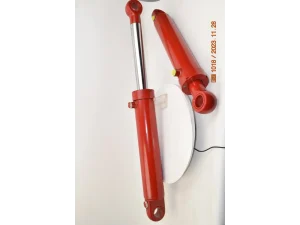
The first key feature to assess is the cylinder type. There are many types of hydraulic cylinders.
- Single-acting cylinders are ideal for one-way force implementation. The retraction occurs through the motors or gravity.
- Double-acting cylinders offer both retraction and extension in the single cylinder. They are ideal for the two ways of force generation applications.
- Do you have a small space to perform the heavy-duty tasks? Please leave it to the telescopic cylinders that make the best place in the hydraulic cylinders.
Before grabbing the right cylinder type, learn about its various features. Pick one that fits your needs and provides detailed and guaranteed performance.
-
Consider Bore Size
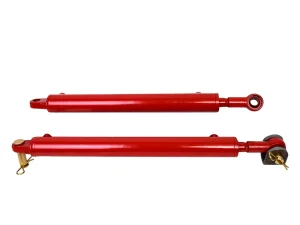
Choosing the bore size is essential. But we have a quick question— what is the bore size?
As already highlighted, it is the internal diameter of the cylinder. The higher the bore size is, the more force it can generate.
Therefore, larger bore cylinders are more compatible with various applications. But don’t overload the force due to large bores.
Understand the concept of force generation in hydraulic cylinders. You can generate a higher force if the surface area and hydraulic pressure are high. Assess the overall needs and opt for the bore size that doesn’t overload your power system. Instead, it must provide the ultimate performance with proper force handling.
-
Wonder About Stroke Length
Stroke Length is another Crucial point in the hydraulic cylinder selection.
- Short stroke length. It can give the required performance but not generate the force necessary for heavy-duty tasks.
- Large strength length. They can consume a large amount of space. Before opting for them, consider the space left for the hydraulic cylinder operations.
Both are extremely toxic to your hydraulic cylinders if stroke lengths are too large or too small. Measure your needs for an ideal stroke length compatible with a specific hydraulic cylinder selection. Choose the one that requires less space and is more compatible with your overall needs
-
Check Operating Pressure
The operating pressure is the normal working pressure of the hydraulic cylinders. Some cylinders can handle up to 1500 PSI. At the same time, others can take 3000 PSI.
The heavy-duty hydraulic jacks can reach up to 10,000 PSI, but that is possible only if you need it for heavy-duty trucks and trailers.
Assessment of the operating pressure is necessary as it can cause potential failures in the system. If the maximum handling pressure is 10,000 PSI, get a compatible solution rated for your system. Avoid the failures and optimize the performance of your hydraulic cylinders.
Conclusion
Measurements are equally effective whether you purchase a new hydraulic cylinder or replace the older one. Ensure you have taken accurate measurements of each component. Ensure safety by taking the right steps. If you don’t know how to take the measurements, dig out the relevant experts in this case.
Do you want premium-quality hydraulic cylinders?
Rely on the QY hydraulics. Our top-class hydraulic cylinders offer seamless functionality. Plus, they ensure accurate pressure and force control. Check out the quality solutions now!

